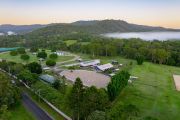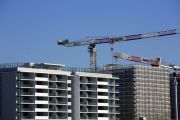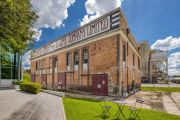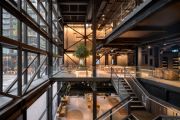
WFH headaches linger for landlords with city offices still empty
More offices were empty across the country in January than six months ago as the work from home trend continues to raise headaches for Australia’s big-city landlords, but the high cost of building new towers may soon deliver them some relief.
Australia’s office vacancy rate nudged up from 14.6 to 14.7 per cent over the six months to January, the latest figures from the Property Council show.
In Sydney, home to many finance, insurance and tech workers, the vacancy rate jumped from 11.6 to 12.8 per cent, while the number of empty floors in Melbourne remained unchanged, at a historic high of 18 per cent.

The trend towards high vacancy rates, while tough for landlords, has been a boon for tenants. Many are opting to upgrade to newer, more amenity-rich towers, often paying the same or slightly better rent than in their old digs.
“The Sydney leasing market is witnessing a flight to quality and flight to value across all key precincts, including the Sydney CBD, North Sydney, western Sydney, and south Sydney,” CBRE’s NSW head of office leasing, Rachel Vincent, said.
Existing offices across the country are also being reinvigorated, with landlords and investors upgrading entrance lobbies and end-of-trip facilities, and spruiking building interiors, rather than building from scratch, in a fierce battle to attract workers.
Rising construction costs and high interest rates are also curtailing development of new towers.
“Tenants are carefully deliberating their decisions as many plan for their workforce to return to the office three to five days per week. This trend reflects a strategic shift towards optimising workplaces for return-to-work mandates,” Vincent said.
The shift is quietly reshaping the commercial and workplace landscape. About 20 per cent of new supply in Sydney’s CBD in the last six months was refurbished stock, and that number increases to 30 per cent in the forecast to 2027, the PCA suggests.
Apart from a bump in projected supply later this year, the number of newly built offices in the Australia’s capital cities is expected to fall sharply over the next three years.
“The need for higher pre-commitment rates and economically viable rents is leading to a decrease in new office supply,” Vincent said. “This in turn will likely result in lower vacancy rates.”
Ashley Buller, CBRE’s Victorian office leasing head, said Melbourne’s office occupancy levels were still among the lowest in the country, around 59 per cent, but two sizeable lease deals signed at the end of last year will remove about 60,000 square metres of vacant space from Docklands.
“We are forecasting prime net absorption across the CBD to reach approximately 80,000 square metres in 2025, driven by rising occupancy rates, tenants centralising to the CBD and white-collar employment growth,” Buller said.
“We believe the headline vacancy rate for Victoria is at, or has passed, its cyclical peak,” he said.
Office vacancy in Brisbane rose slightly (to 10.2 per cent), Adelaide was down (16.4 per cent), Perth also decreased (15.1 per cent) and so did Canberra (down to 9.2 per cent).
The highest concentration of empty office space is on Sydney and Melbourne’s CBD fringes – places such as Macquarie Park, Parramatta, North Sydney, and Crows Nest/St Leonards in Sydney, and St Kilda Road in Melbourne have vacancy between 19 and 30 per cent, the PCA figures show.











